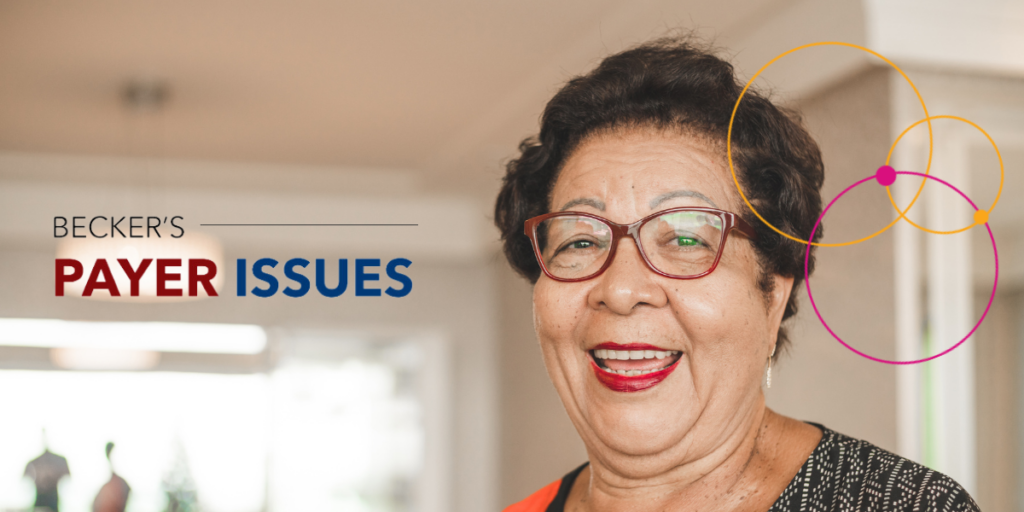
Access to healthcare does not guarantee a person’s overall well-being. Factors such as where and how individuals live can impact their health profoundly. Taking notice and action, the Centers for Medicare and Medicaid (CMS) now permits health plans that serve individuals enrolled in Medicare and Medicaid to cover a range of long-term social supports and services that address social determinants of health (SDOH).
Learning About Social and Economic Health Risks From Dr. Iton
Dr. Anthony Iton was director of the public health department in Alameda County, California, between 2003 and 2009. During this time, he and his team analyzed local residents’ data by neighborhood and discovered trends tied with peoples’ daily lives outside of their health clinics, doctor’s offices and hospitals.
What they learned was interesting: Your ZIP code is as important as your genetic code. Or, in Dr. Iton’s words, “Tell me your ZIP code, and I will tell you how long you will live.”
Where a person lives is just one social determinant of health—also known as the “conditions in the environments where people are born, live, learn, work, play, worship and age,” according to Office of Disease Prevention and Health Promotion. Whereas people engage with the healthcare industry on a periodic basis, everyday life decisions, behaviors and environmental factors shape overall health and wellbeing.
Traditionally, these factors fall into several categories, such as:
- Economic stability, with the ability to get or keep a job with steady income
- Neighborhood and physical environment, such as housing instability and homelessness
- Transportation, such as access to public transport lines or the ability to afford a car and gas
- Education, including barriers to high school or other training that could help a person gain consistent employment
- Food, hunger and nutrition, including living in a so-called “food desert” with lack of access to fresh produce and healthy, affordable food
- Utility needs, with the ability to afford to pay ongoing electricity, gas, phone and water bills
- Community-safety-and social context, including family support
- Healthcare system features (access to clinics, hospitals, specialists, etc.) in a person’s local community
A Growing List of Risks to Health and Well-being
In 2016, I called out a (then) new SDOH factor into the mix having worked on the nascent era of the Internet in healthcare—connectivity as a social determinant of health. Another more contemporary addition to the SDOH inventory is interpersonal violence and exposure to greater risks for injury, death or psychological harm.
Wi-Fi and access to broadband became a key to living, working and learning during the COVID-19 pandemic. So, too, were risks to interpersonal violence. The pandemic shined a brighter, if sobering, light on the role of SDOH on peoples’ individual and community well-being. In the case of the coronavirus, CDC data revealed by April 2020 how patients of different ethnicity or racial backgrounds, socioeconomic status, or healthcare access could more quickly succumb to the virus compared to others.
CMS Opens the Door for SDOH Coverage
The growing list of risks to health outside of traditional clinical factors is prompting change. A significant example is CMS opening the door for health plans serving people enrolled in Medicare and Medicaid to cover a range of long-term social supports and services that fall outside of the “medical” category of care. Federal regulations had traditionally prevented plans from spending on most non-medical services, but CMS has recognized the opportunity to address social determinants investments that bolster enrollees’ overall health.
Medicare Advantage and Drivers of Health
In 2018, CMS finalized a rule to allow Medicare Advantage (MA) plans to cover a range of non-medical benefits that addressed drivers of health beyond healthcare. “Air conditioners for people with asthma, groceries for people on medically prescribed diets, home-delivered meals for people who are immunocompromised and rides to medical appointments for people without transportation all could fall under CMS’s new criteria,” PwC explained at the time.
Medicare identified four criteria for these supplemental benefits, stating that the benefit must:
- Diagnose, prevent or treat an illness or injury
- Compensate for physical impairments
- Act to ameliorate the functional or psychological impact of injuries or health conditions, or
- Reduce avoidable emergency and healthcare utilization
As the number of Medicare Advantage plans has grown, their coverage of new benefits has, as well. The average Medicare beneficiary could choose from 43 MA plans in 2023, with some markets exceeding over 80 options.
To compete in this increasingly-crowded market, MA plans are offering many benefits beyond traditional Medicare. Ninety-seven percent or more of MA plans offer vision, fitness, telehealth, hearing, or dental benefits, a Kaiser Family Foundation (KFF) study quantified. Beyond these “table stakes” benefits, most plans also cover over-the-counter drug benefits, remote access technologies and meal plans. Nearly one-half of MA plans also offer transportation, and one in three provide a benefit for acupuncture, KFF learned.
Medicaid Plans and Drivers of Health
In January 2021, CMS released guidelines for state Medicaid and CHIP programs to follow, allowing them to offer services that address the risks of these drivers of health.
Because Medicaid plans are provided at the state level, there are large variations in the breadth and depth of services offered across the U.S.
The COVID-19 pandemic inspired some Medicaid managed care plans to develop creative responses to their states’ health citizens enrolled in the plans to address social determinants as part of the Public Health Emergency era. These services were most likely to address food security, eviction diversion and shelter for medically vulnerable plan members, and community-support programs, based on a study conducted among state Medicaid directors.
Future Prospects for Medicare, Medicaid and Whole-Person Health
As more healthcare shifts home and providers expect patients to engage in more self-care, both Medicare and Medicaid plans will have the opportunity (and perhaps obligation) to develop new social supports that enable this care-shift to happen. The caregiver crisis, with too-few people available in the so-called “informal care sector” to support people living at-home is one area of opportunity and challenge. Telehealth, chatbots and the emerging market of home robots will be part of this solution as Medicare Advantage and Medicaid plans evolve their portfolio of benefits to address peoples’ everyday needs.
The growth of value-based care for public-sponsored health plans compels them to cover the gamut of services required for whole-person care beyond medical care. Food-as-medicine as well as fitness-as-medicine will become key to bolstering peoples’ health at-home and in the community so plan members can live their full lives whether they age well at home or continue to work and hold down jobs for ongoing economic security.
While addressing the drivers of health is crucial to ensuring whole-person health, non-medical services are not a substitute for healthcare. In the current health policy environment, with the end of the pandemic emergency, some states’ Medicaid programs may lose enrollment—as many as 15 million people based on a Kaiser Family Foundation survey of state Medicaid and CHIP program officials.
The growth of attention to and services for de-risking peoples’ health and well-being is a welcome advent for U.S. health and healthcare. When well-intentioned and well-designed, these benefits can help to bridge gaps in health access and equity.
Next Steps for Payers
- Download our white paper, “Addressing Social Determinants of Health: A Practical Road Map”.
- Read this post to see how the support of community partners can help your organization address SDOH.
- Subscribe to the Medecision blog for more insights like this.


About The Author: Jane Sarasohn-Kahn, MA, MHSA
Through the lens of a health economist, Jane defines health broadly, working with organizations at the intersection of consumers, technology, health and healthcare. For over two decades, Jane has advised every industry that touches health including providers, payers, technology, pharmaceutical and life science, consumer goods, food, foundations and public sector.
More posts by Jane Sarasohn-Kahn, MA, MHSA